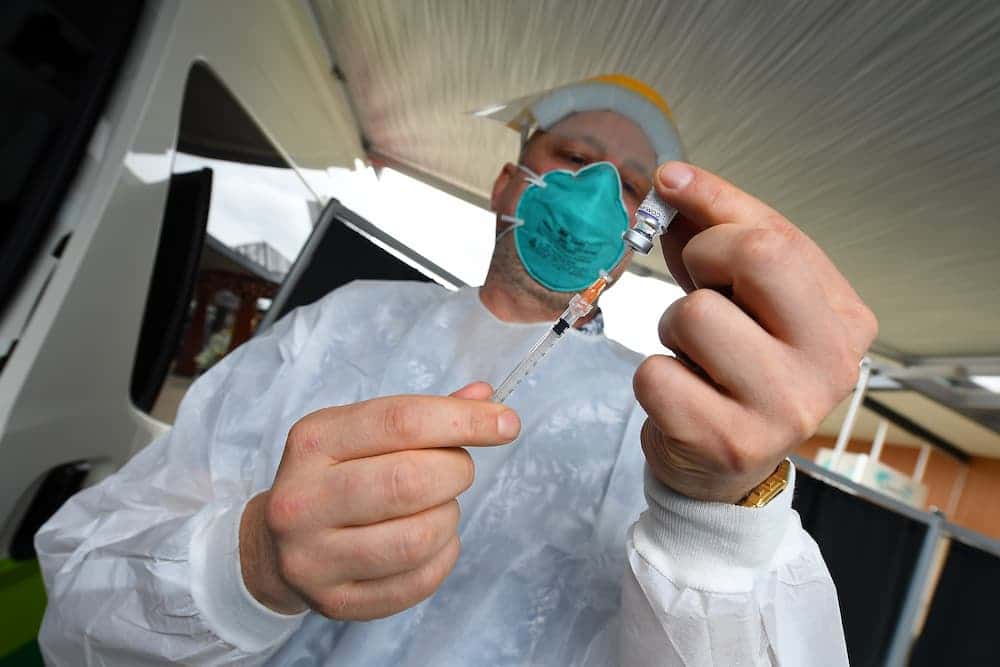While more than 30 per cent of Australians eligible to have their third COVID-19 shot are yet to, the elderly and vulnerable will from Monday begin receiving a second booster ahead of a predicted winter infection surge.
The groups will include those 65 or older, Indigenous Australians aged at least 50, disability care residents and the immunocompromised.
An estimated 4.7 million people will be eligible to get the fourth dose but its expected less than 200,000 will be able at the start of the rollout.
People can have a second booster shot four months after receiving their first.
A parliamentary hearing was told on Friday eligibility numbers will be “relatively small” initially, with the bulk of people more likely able to book vaccination appointments through May and June.
Health department secretary Dr Brendan Murphy says the fourth jab will be critical in the effort to protect at-risk Australians ahead of winter, with a surge in cases of both the virus and influenza looming.
“The single most important thing we can do to protect people with underlying medical conditions, people with disability, people at risk of severe COVID, is to get as much vaccination – including full booster protection – as possible,” he said.
The Australian Health Protection Principal Committee expects an infection peak associated will hit in mid-April in several jurisdictions.
Comprised of chief health officers from across the country, the group says it is considering recommending the removal of quarantine for close COVID-19 contacts.
It says isolation could be replaced by frequent rapid antigen testing, mask wearing outside the house and limiting access of close contacts to high-risk settings.
As of Saturday, almost 12,950,000 Australians had received a first booster vaccine. Almost 20 million have had at least their first vaccine shot and roughly 900,000 remain unvaccinated.
More than 54,000 COVID-19 infections and 26 virus-related deaths were reported across the country on Saturday.
LATEST 24-HOUR COVID-19 DATA FROM ACROSS AUSTRALIA:
ACT: 718 cases, no deaths, 41 in hospital, two in ICU
NSW: 16,807 cases, 11 deaths, 1355 in hospital, 50 in ICU
Victoria: 9008 cases, two deaths, 307 in hospital, 18 in ICU
Northern Territory: 309 cases, no deaths, 14 in hospital, one in ICU
Queensland: 8478 cases, no deaths, 418 in hospital, 16 in ICU
Western Australia: 6439 cases, three historical deaths, 221 in hospital, seven in ICU
South Australia: 4096 cases, one death, 188 in hospital, eight in ICU
Tasmania: 1683 cases, no deaths, 37 in hospital, one in ICU
AAP
Get all the latest Canberra news, sport, entertainment, lifestyle, competitions and more delivered straight to your inbox with the Canberra Daily Daily Newsletter. Sign up here.



